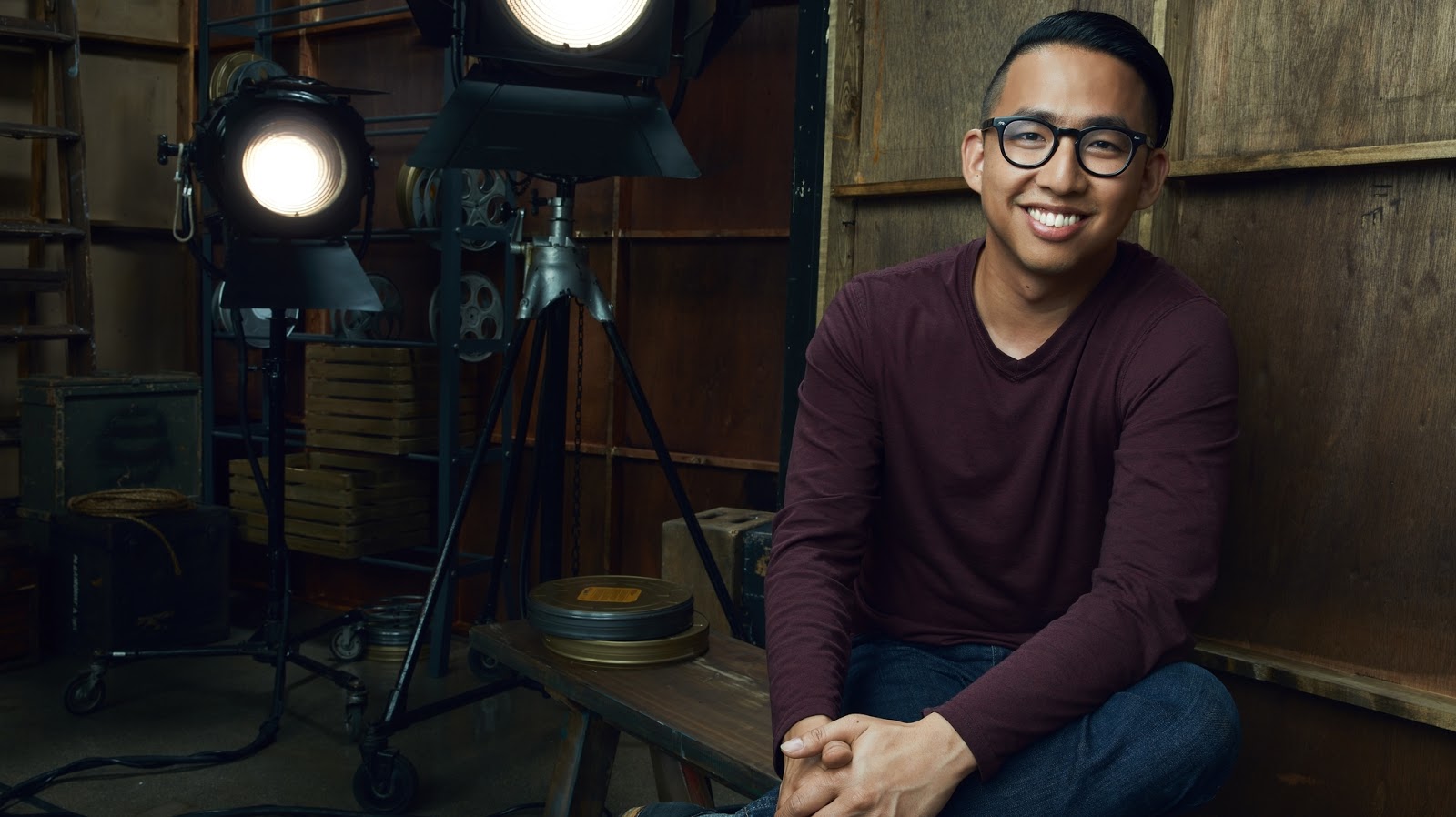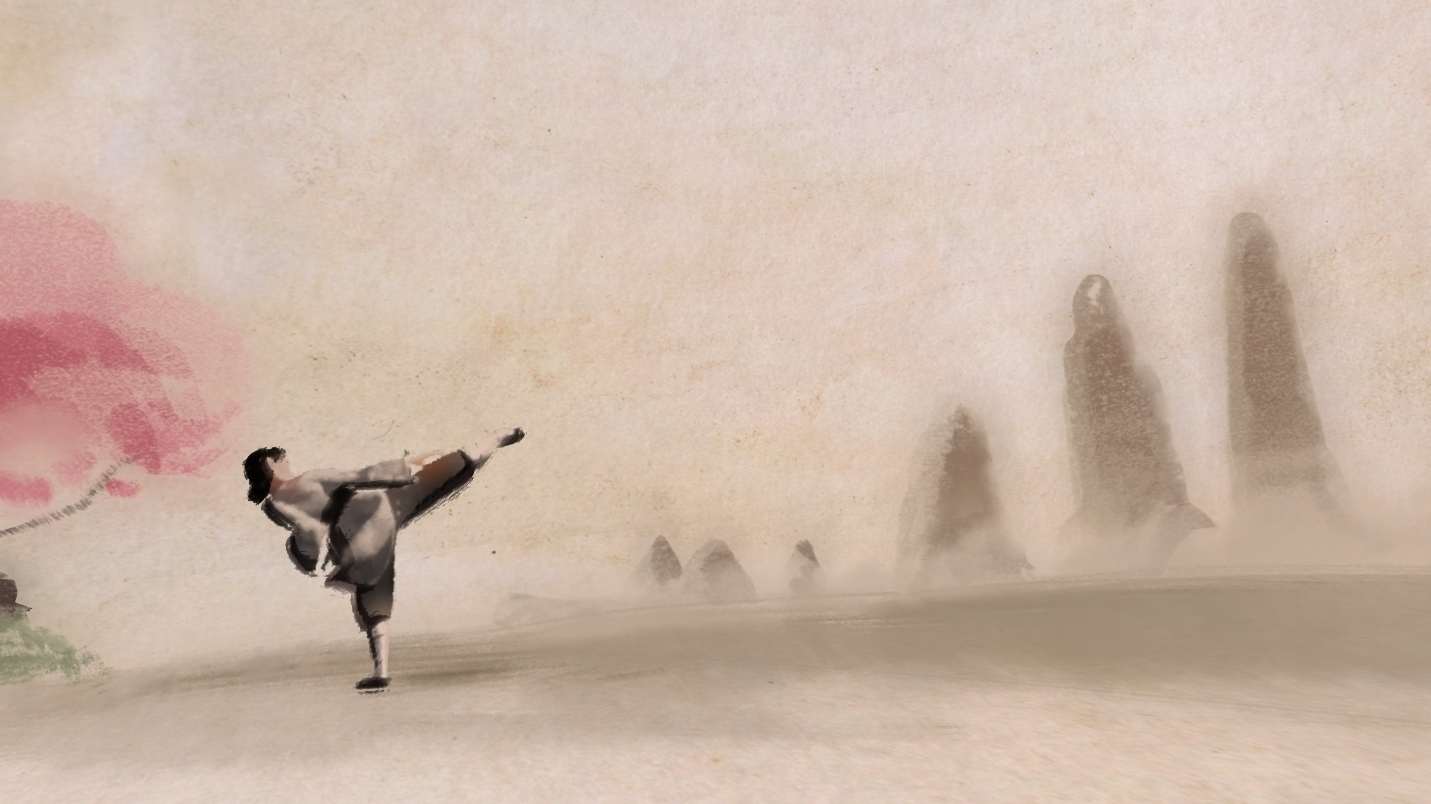Short Circuit Director Spotlight: Jerry Huynh of “Jing Hua”
Technical Director Jerry Huynh has been at Disney Animation for almost five years. He recently had the opportunity to direct his first short film, Jing Hua, part of the Walt Disney Animation Studios Short Circuit experimental film program. The short recently premiered on Disney+ and I had the opportunity to interview Jerry during a recent visit to Disney Animation.
Alex: I was struck by the emotional power of your short. Can you talk about the emotional power of your short and what you were going through at the time that lead to the final product on screen?
Jerry Huynh: Basically my family has been going through a pretty intense moment of grief. What really struck me is when I was watching it all happen. I’m a very emotional person, my instinct is to just breakdown and that’s what I was feeling. When I looked at my aunts and my parents, I didn’t see that. I saw people who were getting tires on the ground and plans in motion. I was like how are you doing this? I don’t understand how you’re doing this. I can barely take the next step and here’s my family like I’m going to put a plan together, I’m going to plan a funeral and I’m going to get them to the right place. When everything was all said and done, I started to see them let themselves feel a little bit more and that was so interesting to me. That idea of putting part of yourself away, doing something, and then having your emotions come out like that. And so I wanted to put that on screen. This performance is for the one who passed away and she doesn’t really give herself the freedom to feel anything until the very last shot where she finally then can cry. That is all I wanted to show is just this person finally finding her own way, this sense of peace because she finally is able to cry. That whole process to me, too, almost mirrored what I was doing because I thought I was processing everything emotionally and then really viewing this, but the making of this short was a whole thing, too. When we finished the last shot, I just cried. I found a way to pay tribute to my family and it was really really nice.
Alex: In the intro, you said that you started this project to reconnect with your heritage and culture. Do you feel like you achieved that goal?
Jerry: Yeah, when I was a kid I went to Chinese school. For most of my life I went to Chinese school and when we were younger, they had us learn calligraphy. While I am far from a Chinese calligrapher... my mom actually helped me a lot with the calligraphy in the piece, I got to try my hand at it again. This was a part of my life that I hadn’t seen in a while. I also grew up studying martial arts, did a lot of Kung fu and performed and studied that for most of my life and the idea to bring that back and reconnect to that in a way that I could talk to my teacher about in a more performative way. We reached a new level of that conversation. And with me and my cousin, because we choreographed this together, I got to work in a space that I’m very familiar with but choreographing is very different than performing so I got to connect with it on that side and be there. And specifically with the language, the title of the short is Jing Hua and Jing Hua in Mandarin is one part of an idiom and that idiom means “Jing hua cho oi,” which means “Flower in the mirror, moon in the water.” It’s kind of a poetic way of saying this is how you feel when you see a flower in the mirror or a moon in the water, it’s beautiful and you want to touch it and grab it but you can’t because it’s not actually there. And so the fact that I could go back into and speak with, because I studied Mandarin, I was able to reconnect with some of that poetry, reconnect with some martial arts and the paintings. And a lot of the inspiration for the paintings, I started looking around in my aunts and uncles houses and on every wall there’s just a painting that they got from China Town. They’re just like ‘This is what paintings look like’ and I’m now realizing no, this is a very specific kind of art form that has found its way onto my parents walls. I was able to stitch all those pieces together and bring that here, which was really nice for me.
Alex: One of the principals of calligraphy as an art form is the brush doesn’t leave the paper, it just keeps going in one line. One of the things I noticed is that the character never stops moving. Animation is a series of drawings and you can’t do an animated short in calligraphy, but it feels like that concept was applied to the character choices in this piece.
Jerry: Thank you for noticing that, that’s really massive. We tried to infuse a lot of those properties in general with the form of choreography, making this a dance. It’s probably the biggest hit on YouTube that you’ll find, but there’s this woman who performs calligraphy as a performance and she’ll have this massive brush on this massive canvas that she places her body and moves it as she moves around, a lot of that rhythmic motion. And the fact that it’s not just in the wrist or anything, it comes from the whole body. A lot of that informed our choreography and how we wanted the camera to move as well. A lot of moments in the camera where things slow down or it swings around and that was all intentional, an idea that came forward from a creative partner, Tony Chow, who really wanted the camera to feel like it was part of the choreography and also had a rhythm to it the way someone who was paining calligraphy would have a rhythm. That was a pretty active part of carrying calligraphy as a concept through the piece. I was like honestly, I don’t know if any of this is going to land so let’s infuse it with ways that maybe we weren’t thinking about so that as a whole it feels like it’s right. I think in a lot of ways it was successful.
Alex: At the end of the short, it dawned on me that the only other time I’ve seen calligraphy in animation is in the intro to Mulan. Did you reference that or use it as inspiration?
Jerry: When this idea came to mind, one of the first things I pulled up was the intro to Mulan and how the calligraphy goes in and comes up through and becomes the Great Wall. That was a huge moment for us and we brought all of these pieces together. We looked at animation from China, we looked at animation that’s tried to do this before. It was really piecemealing those together, but those inspiration pieces helped us as like a ‘Oh, that’s cool.’ What was really nice here is that we were like let’s put boots on the ground and see how we can iterate towards wherever that may be. There wasn’t a specific story moment that allowed for that Mulan type of feeling to it, but it was definitely an inspiration point.
Alex: The collaborative spirit of this studio is evident in the way each Short Circuit Director talks about each other’s projects. What was it like to not only have this opportunity, but to have your colleagues become cheerleaders rooting you on and wishing for your success?
Jerry: In the moment that it’s happening, there’s nothing that saved me more than being able to go to Natalie [Nourigat] or Kendra and just having their support from a visceral internalized emotional sense, that kept me afloat. But the thing that that does is elevate you. It makes you want to be other people’s cheerleaders and other people’s support. It’s like support begets support begets support and that’s a huge part of this studio and this program specifically. Other directors from previous rounds like Brian Menz and Zach [Parrish], they’d stop me in the halls and be like ‘Hey, you’re at this point and it’s probably really hard but you’ve got it, you can do this.’ And it was so nice just to have this kind of a hug coming from all around. It’s pretty transformative and I don’t know what I would’ve been able to do without it. It’s something special.
Jing Hua is now streaming exclusively on Disney+ along with other Disney Animation Short Circuit films.




